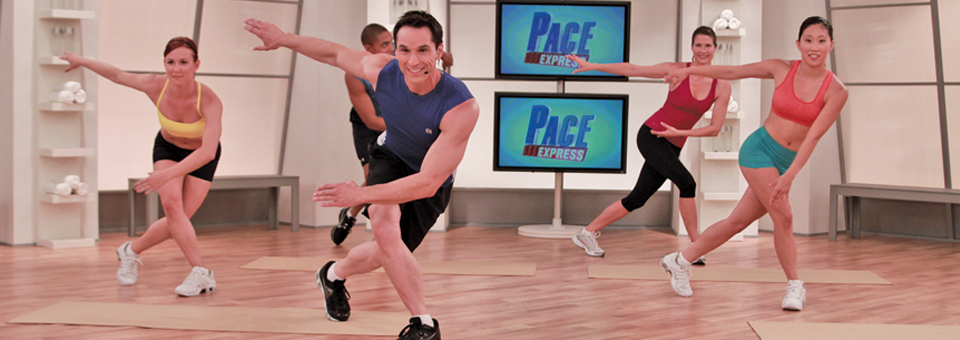I’ve heard from patients and readers that they don’t believe they can work out using my PACE principle. They think you need to be in great shape before you can start.
But anyone can do PACE – no matter what shape you’re in. I like to say if you can move, you can do PACE.
Here’s why I want you to try…
Long-duration aerobic exercise won’t protect you from heart disease… it won’t make you lean… it won’t even boost your energy levels.
When you do cardio, your intensity is always at a medium level. You’re not challenging yourself as much as you think.
And after a few weeks, you stop improving.
Long-duration cardio shrinks your heart’s output and restricts your lungs. This is your body’s adaptive response to long-duration exercise.
In fact, when you exercise for more than 15 minutes, you use mainly fat for energy. Most people think that’s a good thing.
But they’re wrong.
Long workouts encourage your body to build and store more fat. It prepares itself for the next exercise session when it will need fat to fuel another long-duration workout.
And you’ll never be able to create the reserve capacity in your lungs that gives your body an extra turbo boost when needed.
This is essential. Many activities need extra oxygen and blood flow — climbing stairs, lifting something heavy, or even coping with the daily stress demands. These all require extra energy on demand.
And extended periods of aerobic training can even age you faster by shrinking your telomeres.
As a regular reader, you’ll know that telomeres are the protective caps at the end of each cell’s DNA. They are a measure of your body’s true biological age.
The longer your telomeres, the younger your cells act. The shorter they get, the more
vulnerable you are to chronic aging conditions like diabetes, heart disease, Alzheimer’s, and cancer.Studies show that long-term cardio shortens telomeres. One study found that the telomeres in athletes doing long-duration cardio workouts were much shorter than those who did almost no exercise.1
Instead, you need a natural way of moving and exerting yourself. You need a workout that supports your heart, lungs, and telomeres, making you younger from head to toe.
That’s why I developed PACE. It replicates the natural rhythm of exertion that kept your ancestors in peak condition and ready to react to any situation.
PACE shifts the focus of your workout from “how long” you work out to “how intensely” you exert yourself.
It uses brief but vigorous routines of increasing intensity to help boost the strength and capacity of your heart and lungs.
The health benefits of PACE are almost endless. Here are a few things it can do for you:
-
- Improve heart and lung power. PACE builds up your lung power to get more life-giving oxygen flowing throughout your body, especially your heart. PACE gets 400% more oxygen to your lungs and 331% to your heart.2
- Increase memory. In a study, subjects who did PACE-like exercise increased their supply of brain-derived neurotrophic factor, or BDNF — a kind of growth hormone for the brain. Other studies have shown that people with the highest levels of BDNF develop dementia 50% less often than those with lower levels.3
- Stimulate stem cells. PACE activates and increases stem cells in your bone marrow and gets them circulating in the blood. Increasing the number of circulating stem cells in your body can potentially repair your heart, repair stroke damage, help bones heal, and improve muscle and tissue damage.4
- Strengthen your immunity. Stem cells are a key part of your immune system. Once in the bloodstream, these cells patrol tissues to halt infections, fight common colds and flu-like complaints, and repair tissue.
Everyone can do PACE – here’s how to start
Like I said earlier… If you can move, you can do PACE. You don’t have to be an athlete – or even in shape – to start.
The most important thing is to increase your challenge gradually over time.
Here’s a simple way to get going.
- Start by walking long enough to get your muscles warmed up.
- Then pick a landmark and walk at your maximum capacity until you reach it.
- Resume walking at a leisurely pace until you recover.
- Then, choose another landmark a little further away and repeat.
- Repeat once more for a set of three.
To Your Good Health,

Al Sears, MD, CNS
References:
1. M Collins, et al. “Athletes with exercise-associated fatigue have abnormally short muscle DNA telomeres.” Med Sci Sports Exerc. 2003;35(9):1524-1528
2. Adapted from: von Ardenne, M. Oxygen Multistep Therapy. Thieme. 1990.
3. Weinstein G, et al. “Serum brain-derived neurotrophic factor and the risk for dementia: The Framingham Heart Study.” JAMA Neurol.2014;71(1):55-619.
4. Marycz K, et al. “Endurance exercise mobilizes developmentally early stem cells into peripheral blood and increases their number in bone marrow: Implications for tissue regeneration.” Stem Cells Int. 2016:5756901.

